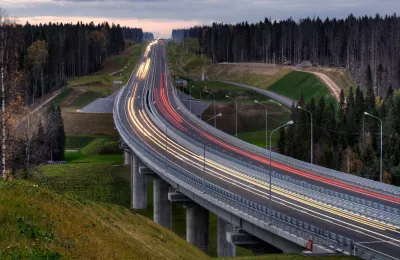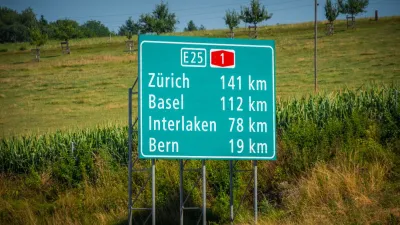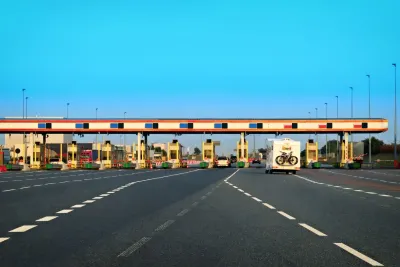
 Navigating Switzerland’s Roads: A Gateway to Scenic Journeys
Navigating Switzerland’s Roads: A Gateway to Scenic Journeys
Whether you're just passing through on your way to another country or embarking on an adventure along Switzerland's picturesque routes, a solid understanding of the road network is essential. Switzerland's meticulously maintained motorways and expressways are crafted to ensure smooth and efficient travel, seamlessly connecting major cities and regions both within the country and beyond its borders. Given its strategic location, Switzerland stands as a vital hub for European road travel, making it a cornerstone of any journey across the continent.
Understanding Road Designations
Planning a trip that involves driving through Switzerland? It’s crucial to familiarize yourself with some key rules and characteristics of the local road network. The Swiss system differs significantly from what you may know in other countries, not only in its numbering but also in road designations, speed limits, and overall traffic infrastructure. To help you navigate with ease, we've gathered the most important details about Switzerland’s roadways, offering a comprehensive overview that covers everything you need to know.

Switzerland is divided into 26 cantons, which can be roughly compared to federal states in other countries. Understanding this division makes it easier to navigate and get a clear overview of Switzerland's extensive road network. Until the 1950s, the responsibility for managing roads lay solely with the cantons. It wasn't until a few years later that the federal government began to play a role in this crucial task.
Robust Road Infrastructure
As highlighted on the detailed map below and confirmed by official statistics, Switzerland boasts a remarkably well-developed road network across nearly all regions. This network holds up exceptionally well when compared to other countries. The areas surrounding Zurich, Solothurn, Bern, Basel, and St. Gallen are particularly notable for their dense and efficient road infrastructure.
The map also reveals the subdivision of various roads, which will be explored in more detail later. Additionally, some of the newly constructed roads are visible on the map, and these will be discussed further in the following sections.
As previously mentioned, responsibility for Switzerland’s road network is shared among several entities. While a significant portion remains under the control of municipalities and cantons, since 1998, the Federal Roads Office (Astra) has also played a vital role in maintaining and expanding the national road infrastructure.
To fully grasp the system in Switzerland, it's important to recognize a key distinction: the country’s transport infrastructure is categorized into different types of roads. These include motorways and main roads that form part of the national road network, as well as cantonal road sections. The cantonal roads often serve as shorter feeder routes that connect to the motorways. We will delve into these distinctions in detail later in this article.

Determining the exact number of roads in Switzerland is challenging due to the complex system of numbering and the distinction between national and cantonal roads. Additionally, some road sections are still under construction or not yet fully operational.
However, what we do know is that, as of a 2022 survey, there are 26 road sections officially designated as national roads in Switzerland.
Length and Infrastructure of the Swiss Road Network
Regarding the total length of all roads in Switzerland, the Federal Roads Office (Astra) reported the following data for 2023: Switzerland’s road network now spans more than 84,600 kilometers, covering approximately one-third of the country’s settlement area. Of this, motorways account for around 1,700 kilometers, while cantonal roads make up approximately 18,000 kilometers. In comparison, the Swiss rail network covers "only" about 5,600 kilometers.
It is also noteworthy that the road network expanded by about 800 kilometers in the past year alone. This growth highlights why Switzerland’s extensive and well-maintained routes stand strong in international comparisons.

Switzerland’s road network is meticulously categorized to ensure efficient travel across the country. Any road that serves a significant role for the nation is considered part of the national road network. Among these, motorways are particularly crucial for drivers using Switzerland as a transit route. The national roads are divided into three distinct classes, while additional categories include cantonal and municipal roads.
National Roads
Switzerland’s national roads encompass motorways, motor roads, and main roads. Originally, these routes were designated with an "N" number for better identification. However, this designation is now primarily used by authorities and does not reflect the road's specific category. Instead, an "A" numbering system is employed for motorways and motor roads, with each route further classified by its class.
First-Class National Roads
First-class roads are characterized by their directionally separated lanes, often featuring up to seven lanes (4+3) and typically including parking lanes. National motorways fall into this category. The A1 is Switzerland's longest motorway, stretching from Geneva through St. Gallen to St. Margrethen, connecting the French-speaking part of Switzerland with the Austrian border (east-west direction). The A3 motorway is another key route, especially for travelers from France, as it continues from the A35 autoroute and passes through Zurich in the southwest.
Cantonal Roads
As the name suggests, cantonal roads fall under the jurisdiction of the respective canton. This category includes motorways, motor roads, main roads, and secondary roads, which sometimes blur the lines with the national road network. Most of these routes are concentrated around key areas like Bern, Zurich, and Valais. A significant difference between national motorways and cantonal routes is that the latter do not require a vignette for use.
Municipal Roads
Municipal roads, which consist of main and secondary roads, are managed by local municipalities. These roads primarily connect nearby towns and are mainly used by locals. In the hierarchy of Switzerland's road network, municipal roads are followed only by private roads.
For travelers paying the digital route toll via our portal, tickets are available for immediate use. A variety of payment methods, including Visa, Diners Club, and more, are accepted. A confirmation with a link will be sent to the provided email address.
As previously mentioned, certain sections of Switzerland’s road network are still under development. These ongoing construction projects are visible across various regions of the country. One prominent example is the construction of a second tube for the Gotthard Tunnel, a project expected to continue until 2029. With the original tunnel showing signs of aging, the additional tube will ensure uninterrupted travel even during maintenance periods.
However, the Gotthard Tunnel is not the only site of significant construction in Switzerland. Numerous motorway junctions and sections in central, western, and northern Switzerland are also undergoing upgrades. These projects are crucial for maintaining and expanding the current road network, ensuring it meets the demands of modern traffic.
Speed Limits
Understanding the speed limits on Switzerland’s roads is essential for safe and legal driving. Unlike in some other countries, Switzerland enforces strict speed limits on its motorways and motor roads. The maximum speed limit on motorways is generally 120 km/h for passenger cars unless otherwise indicated. On motor roads, the limit drops to 100 km/h. Outside of towns and municipalities, the maximum speed is 80 km/h, while within built-up areas, it is reduced to 50 km/h. Different regulations may apply for caravans or vehicles towing trailers, so it’s important to stay informed of specific rules.

In Switzerland, the use of vignettes is mandatory on all national roads operated by the federal government. However, the system in Switzerland has some unique aspects compared to surrounding countries.
Unlike in other nations, Switzerland does not offer vignettes for different time periods—only an annual vignette is available for a flat fee (currently around €41). Since August 1, 2023, it has been possible to purchase the Swiss vignette digitally. Travelers needing a vignette can buy it at sales points near the border or conveniently pre-order it online through our platform.
Currently, there are only two locations in Switzerland where a special toll is required: the Great Saint Bernard and the Munt la Schera tunnel. However, this could change with upcoming revisions to the system. For instance, it is possible that additional fees may soon be introduced for the use of other tunnels, particularly those crossing the Alps. Switzerland may look to neighboring Austria, known for its special toll routes, as a model for these potential changes.
